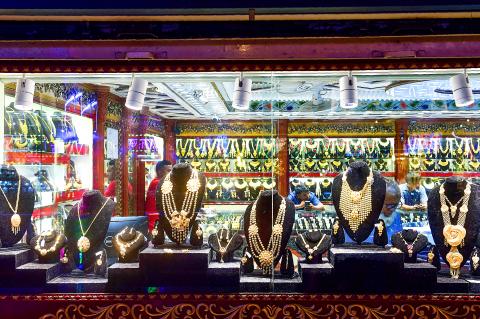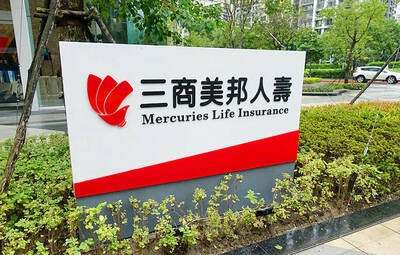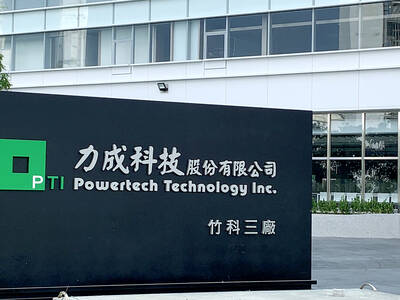India, which vies with China as the top consumer of bullion, is working on new policies to improve transparency and help expand its US$19 billion gold jewelry industry, according to people with knowledge of the matter.
The plans being worked out by India’s finance and commerce ministries along with industry groups should be finalized by the end of March next year, the people said, asking not to be identified because they are not authorized to speak publicly.
Indian Ministry of Finance spokesman D.S. Malik did not answer calls to his cellphone, while a spokeswoman for the Indian Ministry of Commerce did not reply to an e-mail seeking comment.

Photo: AFP
The start of a spot bullion exchange, to make gold supply more transparent and help enforce purity standards is under consideration, the people said.
An import tax of 10 percent could also be reduced as the government seeks to eliminate smuggling, they said.
The plans also include a dedicated bank for the jewelry industry, according to one of the people.
The overhaul of India’s disorganized and fragmented gold jewelry industry is meant to bolster confidence among consumers, where the gifting of gold at weddings and festivals or its purchase as a store of value are deeply held traditions. Ensuring quality standards and allowing supply chains to be easily tracked are ways to enhance trust.
The estimate for the size of the sector was given by the Mumbai-based India Bullion and Jewellers Association Ltd.
The measures could help underpin Indian demand, which is recovering after slumping to a seven-year low last year.
Consumption is projected to rise to between 771 tonnes and 862 tonnes by 2020, from an estimated 590 tonnes to 680 tonnes this year, buoyed in the short term by a lower-than-expected goods and services tax to be implemented next month, the World Gold Council (WGC) said last week.
Gold for August delivery on Friday rose about 0.1 percent to US$1,255.20, but was down 1.1 percent for the week.
The Indian government fixed the tax on gold at 3 percent, lower than the 5 percent feared by the industry, as it replaces more than a dozen domestic levies with a single duty.
“The gold supply chain should become more transparent and efficient, and the tax reform could boost economic growth, which we see as supporting gold demand,” said the WGC, a producer body that advocates for the metal.
Over the medium term, the sector will find it tougher to evade taxes as legal imports go through the banking system and a full trail will now be established by the new nationwide tax compared with previous duties, which were levied at the state level only, Credit Suisse Group AG said in a note Thursday.
The government is also keen to get the public to recycle its jewelry to reduce the nation’s reliance on imports. After a slow start to its plans to monetize the precious metal held in households and institutions, the government is looking to tweak the scheme and attract more participants, the people said, without giving details.
Other metals:
Spot silver settled at US$16.7 per ounce on Friday, down 3.7 percent for the week.
Copper rose 0.3 percent to US$5,677.50 per tonne on Friday.

Mercuries Life Insurance Co (三商美邦人壽) shares surged to a seven-month high this week after local media reported that E.Sun Financial Holding Co (玉山金控) had outbid CTBC Financial Holding Co (中信金控) in the financially strained insurer’s ongoing sale process. Shares of the mid-sized life insurer climbed 5.8 percent this week to NT$6.72, extending a nearly 18 percent rally over the past month, as investors bet on the likelihood of an impending takeover. The final round of bidding closed on Thursday, marking a critical step in the 32-year-old insurer’s search for a buyer after years of struggling to meet capital adequacy requirements. Local media reports

US sports leagues rushed to get in on the multi-billion US dollar bonanza of legalized betting, but the arrest of an National Basketball Association (NBA) coach and player in two sprawling US federal investigations show the potential cost of partnering with the gambling industry. Portland Trail Blazers coach Chauncey Billups, a former Detroit Pistons star and an NBA Hall of Famer, was arrested for his alleged role in rigged illegal poker games that prosecutors say were tied to Mafia crime families. Miami Heat guard Terry Rozier was charged with manipulating his play for the benefit of bettors and former NBA player and

The DBS Foundation yesterday announced the launch of two flagship programs, “Silver Motion” and “Happier Caregiver, Healthier Seniors,” in partnership with CCILU Ltd, Hondao Senior Citizens’ Welfare Foundation and the Garden of Hope Foundation to help Taiwan face the challenges of a rapidly aging population. The foundation said it would invest S$4.91 million (US$3.8 million) over three years to foster inclusion and resilience in an aging society. “Aging may bring challenges, but it also brings opportunities. With many Asian markets rapidly becoming super-aged, the DBS Foundation is working with a regional ecosystem of like-minded partners across the private, public and people sectors

BREAKTHROUGH TECH: Powertech expects its fan-out PLP system to become mainstream, saying it can offer three-times greater production throughput Chip packaging service provider Powertech Technology Inc (力成科技) plans to more than double its capital expenditures next year to more than NT$40 billion (US$1.31 billion) as demand for its new panel-level packaging (PLP) technology, primarily used in chips for artificial intelligence (AI) applications, has greatly exceeded what it can supply. A significant portion of the budget, about US$1 billion, would be earmarked for fan-out PLP technology, Powertech told investors yesterday. Its heavy investment in fan-out PLP technology over the past 10 years is expected to bear fruit in 2027 after the technology enters volume production, it said, adding that the tech would